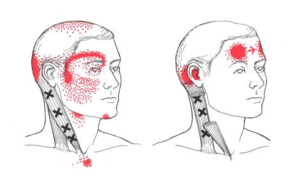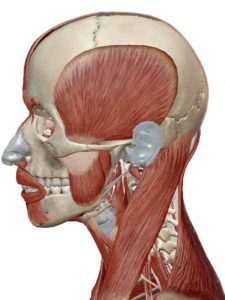Headaches are a common cause of people entering our office for care. Patients often describe their headaches as just a part of life that they have grown to accept. Some even think that they are normal, that everyone has them, and that it is just a part of everyday life. I would suggest that this is not the case and that there is always an answer as to the cause of the headaches. Nobody should have to live with frequent headaches and they can be prevented.
There are so many reasons one may have a headache that may range from dehydration to sinister disease. Our goal at [CORE] Chiropractic and Wellness is to rule out the scary things and hone in on the exact cause. We find that there are three main classifications to the causes of headaches: musculoskeletal, functional medicine, and pathology.
 Musculoskeletal Causes:
Musculoskeletal Causes:
We have been successful over the years at identifying musculoskeletal causes of headaches and making lasting changes to the joint and muscular system. Check out this picture. The red is where the pain will be, but the black Xs are where the actual trigger points (tightness) are. This is a very common presentation related to musculoskeletal headaches. These trigger points give us an idea of whether or not further imaging/testing is necessary or if the main cause is the muscles and joints.
Most Common Musculoskeletal Causes: Temporomandibular Joint (TMJ) Dysfunction, neck stiffness, and improper respiration patterns.
These conditions are where we thrive! They are treated with manual adjusting, soft tissue treatments, Dynamic Neuromuscular Stabilization (DNS), and acupuncture. These treatments, coupled with patient exercises and behavior modification, are classically the best therapeutic regimen for acute and chronic headaches.
For example: TMJ Headaches
These headaches often present with morning and evening pain that centers around the jaw, and the temporal and occipital regions of the head. Yes, stress can play a role with TMJ headaches but these headaches have a musculoskeletal cause. The muscles of the jaw, neck, and skull frequently become overworked when a person clenches their teeth together. Knowingly or unknowingly the patient is creating their headache pattern because of the teeth clenching. If this happens at night while your sleeping a mouth guard or night splint may be needed. Another helpful tip is to be aware of your daytime clenching habits. Clenching while reading, working at the computer, or performing fine motor activities is common. This habit contributes to nighttime clenching and can lead to TMJ headaches. 
To fix these headaches we use Active Release Technique to reduce the tension in the associated muscles of the jaw, neck, and head. We can also use acupuncture to reduce the muscle tension, if needed. Manual manipulation of the cervical and thoracic spine improves the posture of the head, neck, and shoulders. Finally, we give some simple advice. We tell our TMJ patients to “Hold lips together, teeth apart, tongue on the roof of your mouth.” This is an anti-clenching position of the jaw and should be used whenever you find yourself clenching during the day. Practice it in the car and when you are in front of your computer.
Functional Medicine Causes:
Headaches can be created by many systemic problems that follow under the category of functional medicine. These causes can take some time to both identify and treat but don’t underestimate their ability to cause debilitating headaches.
Most Common Functional Medicine Causes: Female hormone imbalances, food allergies, thyroid disorders, blood sugar irregularities, and gluten sensitivities.
Blood tests, headache diaries, and elimination diets are frequently used to diagnose and treat these functional medicine causes. On occasion, supplements and medications may be needed to treat these types of headaches.
For example:
A headache that occurs in the mid-morning or mid-afternoon or 2-3 hours after your last meal can be caused by a drop in blood sugar. When a high carbohydrate meal is eaten the blood sugar will spike. After a blood sugar spike a rapid fall of blood sugar will occur. This sudden drop in blood sugar can create an occipital muscle tightness leading to a classic tension headache pattern.
To fix these headaches reduce/eliminate high carbohydrate meals and add frequent protein snacks throughout the day. The stabilization of blood sugar will assist in preventing these headaches and improve your insulin sensitivity holistically. You may also find topical CBD cream to be helpful. Simply rub a small dab of the CBD cream over the temple and back of the head or neck to reduce the headache pain.
Pathological Causes:
The scariest types of headaches are those caused by pathology. These types of headaches are generally created by a pathological change in vascular or neural health of the brain. These types of headaches have little to no identifiable triggers or fixes. They appear at random times for no reason or can remain and never relent. A thorough evaluation, including imaging ordered by your physician is recommended. If pathology is discovered many of these causes are very treatable and a referral will be made. If pathology is not discovered then look back to the other two categories of headache patients for further investigation.
Do not put up with your headaches or just assume they are normal. Let us know what you are suffering with so that we can help you with the most appropriate care. There is hope for those suffering with headaches but it starts with you communicating the problem.
We will partner with you and help you become healthier than you have ever been.
All essential oils and diffusers are 15% off through November 14.

Daryl C. Rich, D.C., C.S.C.S.






